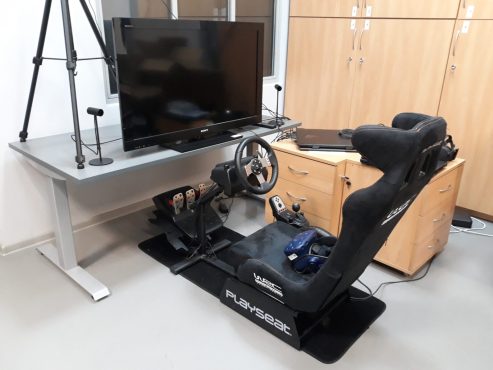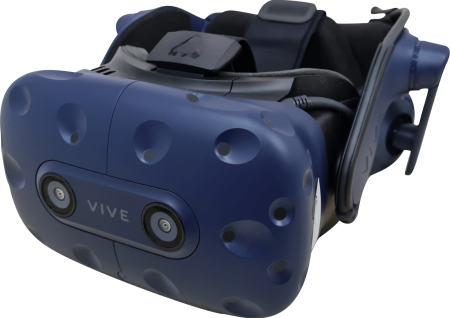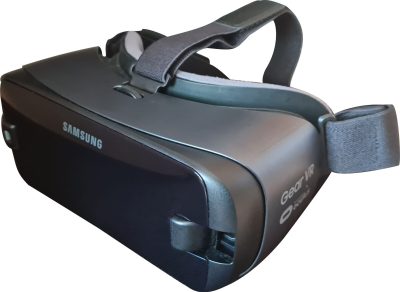Virtual reality test stand with the use of Oculus Rift devices, VR Samsung Gear and HTC VIVE goggles
Virtual Reality is a term that describes a three-dimensional environment generated by a computer. Thanks to its use, a user can interact and manipulate selected objects in an artificially created virtual world. In VR, stimuli can be presented using special goggles that are put on the subject’s head. The glasses consist of headphones and two displays that enable 3D spatial vision and sound reception.
The stand is equipped with the most popular devices on the market: Samsung Gear VR, Oculus Rift, HTC VIVE Pro. Despite their very small size, they allow you to completely immerse yourself in the virtual world. The devices consist of goggles, a camera for tracking the user’s position and headphones.
Navigation in a virtual environment is possible thanks to a “tracking system” consisting of an antenna and sensors mounted on the body, for example on the upper and lower limbs. This enables the mapping of the subject’s movements and its interaction with virtual objects.

For the purposes of testing and training drivers, a stationary research position was created to simulate driving in safe and controlled conditions. Stationary research position consists of:
- HTC VIVE Pro Goggles Kit,
- Oculus Rift Kit,
- Samsung Gear VR Goggles,
- Samsung Galaxy S8+,
- Playseat Forza Motorsport pro,
- Playseat seatslider,
- Playseat pro gearshift holder,
- ASUS ROG Strix SCAR computer,
- Sony TV: 40 inches, resolution 1960 × 1080, 60 Hz,
- Steering wheel with pedals and gears – Logitech G27 Racing Wheel.
HTC VIVE Pro Goggles Kit


Oculus Rift Kit
Samsung Gear VR Goggles


